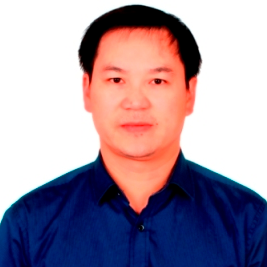Colloidal Crystals
A special issue of Crystals (ISSN 2073-4352).
Deadline for manuscript submissions: closed (31 May 2016) | Viewed by 66624
Special Issue Editor
Interests: colloidal self-assembly; block copolymer self-assembly; piezoelectric and ferroelectric single crystals; organic–inorganic hybrid perovskite single crystals; black phosphorus single crystals
Special Issues, Collections and Topics in MDPI journals
Special Issue Information
Dear Colleagues,
As an old material, colloidal particles have long been used as the major components of various industrial products, such as additives in coating and paint, foods, ink products, chromatographic support, paper, cosmetics, photographic films, electronic packaging technology and many others, due to their susceptibility to different chemical modification and excellent mechanical properties. Particularly, monodisperse colloidal spheres can form a 2D or 3D colloidal crystal with a highly ordered structure, via a so-called self-assembly process. Colloidal crystals have stimulated widespread interest in recent decades. On the one hand, the self-assembly of colloidal spheres provides a fascinating model for studying the crystallizing behavior of atoms. On the other hand, colloidal crystals themselves have demonstrated application in a wide variety of fields, such as photonic crystal, phononic crystal, catalysis, wetting, display, energy storage and conversion, chemical and biological sensing, and templates for chemical synthesis, cell culture, and nanofabrication.
The objective of the Special Issue “Colloidal Crystals” is to provide a unique forum allowing scientists working in this field to present their recent results in any of the research areas related to colloidal crystals. It should be pointed out that the topics summarized under the keywords should be considered only as some potential examples as this issue is actually open for any advanced topics in the wide field of colloidal crystals.
Dr. Qingfeng Yan
Guest Editor
Manuscript Submission Information
Manuscripts should be submitted online at www.mdpi.com by registering and logging in to this website. Once you are registered, click here to go to the submission form. Manuscripts can be submitted until the deadline. All submissions that pass pre-check are peer-reviewed. Accepted papers will be published continuously in the journal (as soon as accepted) and will be listed together on the special issue website. Research articles, review articles as well as short communications are invited. For planned papers, a title and short abstract (about 100 words) can be sent to the Editorial Office for announcement on this website.
Submitted manuscripts should not have been published previously, nor be under consideration for publication elsewhere (except conference proceedings papers). All manuscripts are thoroughly refereed through a single-blind peer-review process. A guide for authors and other relevant information for submission of manuscripts is available on the Instructions for Authors page. Crystals is an international peer-reviewed open access monthly journal published by MDPI.
Please visit the Instructions for Authors page before submitting a manuscript. The Article Processing Charge (APC) for publication in this open access journal is 2600 CHF (Swiss Francs). Submitted papers should be well formatted and use good English. Authors may use MDPI's English editing service prior to publication or during author revisions.
Keywords
- fabrication of colloidal crystals
- mechanism of colloidal self-assembly
- nanofabrication based on colloidal crystal
- colloidal photonic crystals and phononic crystals
- non-spherical colloidal crystals
- binary colloidal crystals
- application of colloidal crystals in emerging areas





